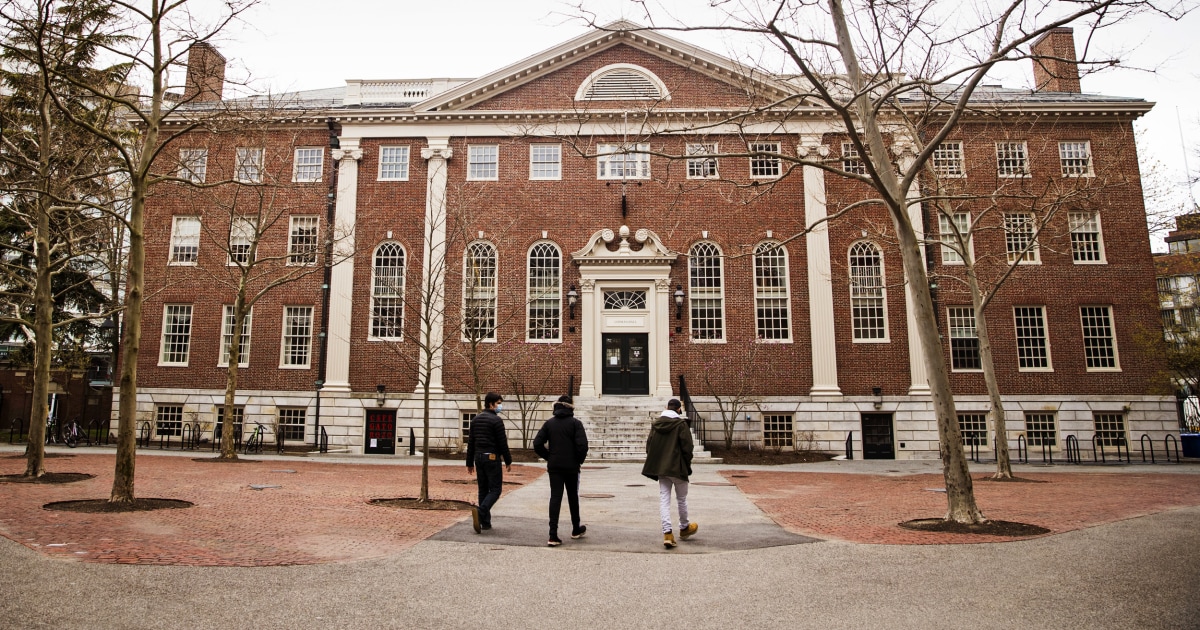
The Supreme Court on Monday agreed to review Students for Fair Admissions v. President and Fellows of Harvard College, a case challenging the use of race in admissions at the Ivy League institution. It will also hear a similar case against the University of North Carolina at Chapel Hill.
These policies are often pursued by progressives for the well-intentioned purposes of promoting equality and diversity. But good intentions are not enough to justify them.
This litigation highlights a number of long-standing flaws in the “diversity” rationale for racial preferences embraced by previous court decisions and adopted by colleges around the country. The Harvard case also features extensive evidence indicating the school’s admissions system specifically discriminates against Asian American applicants — not just by comparison with other racial minorities but even relative to whites. In the Harvard case, the Supreme Court will for the first time consider this increasingly troubling aspect of affirmative action policy.
If courts stuck closely to the text of the laws they interpret, the case against Harvard would be an easy one for the school to lose. As a private institution, Harvard is not bound by constitutional constraints against racial discrimination (UNC, by contrast, is a public university). But it is subject to Title VI of the Civil Rights Act of 1964, since it receives federal funds for student financial aid and other purposes. Title VI bars discrimination “on the ground of race, color, or national origin” in any education program receiving federal funds, and it doesn’t exempt well-intentioned racial discrimination in the form of affirmative action.
But the Supreme Court (wrongly, in my view) has long interpreted Title VI to allow racial preferences in situations where the court’s interpretation of the equal protection clause of the 14th Amendment would permit them. And a series of Supreme Court rulings — most notably 2003’s Grutter v. Bollinger and 2016’s Fisher v. University of Texas (often referred to as Fisher II) — have held that racial preferences in higher education admissions are permissible under the 14th Amendment in some situations in which they are used to promote educationally beneficial “diversity,” i.e., ensuring there is a sufficient number of minority students (sometimes called a “critical mass”) so other students are exposed to their distinctive viewpoints.
A racially and ethnically diverse student body, the court concluded in these cases, can potentially benefit students of all races by exposing them to new perspectives and preparing them for careers in an increasingly diverse society. Harvard argues — and lower court rulings in the case agreed — that its race-conscious admissions policy is permissible under these precedents.
The Supreme Court’s standards for acceptable racial preferences are far from clear. Grutter and Fisher are frustratingly ambiguous on such key questions as what qualifies as a “critical mass” of students from a given group that is sufficient to promote diversity, for example, and how much deference courts should give to universities’ educational judgment about the amount and type of diversity they need.
When the court considers the Harvard and UNC cases, it would do well to reject the “diversity” rationale entirely, or at least subject it to much tougher standards of review.
As it stands, the racial and ethnic categories used by Harvard and many other universities make little sense. As one expert in an amicus brief supporting the plaintiffs pointed out, the “Hispanic” or “Latino” category lumps together such varied groups as Argentinians, Cubans, Mexicans and immigrants from Spain. “Asian Americans” include racial and ethnic groups that cover more than half the world’s population, such as Chinese people, Indians and Filipinos, among others. Such distinct groups as Arab Americans, native-born white Protestants and recent immigrants from Bulgaria are all classified as “white.” “African American” combines native-born Black Americans with immigrants from Africa and the Caribbean.
Needless to say, these groups have vastly different histories. Lumping them into a few crudely defined categories makes a mockery of the idea that universities are genuinely pursuing diversity as opposed to engaging in gross stereotyping.
Perhaps even worse, the diversity rationale could be used to justify all kinds of racial and ethnic preferences. For example, to my knowledge I was the only Russian Jewish immigrant in my class at Yale Law School. Would “diversity” justify Yale using ethnic preferences to make sure there was another the following year?
Similar reasoning could even justify racial preferences for white students at historically Black institutions, as was actually attempted at one such school. Whether you are an originalist, a living constitutionalist or somewhere in between when it comes to legal philosophy, we should at least be able to agree that the Constitution bars this kind of open-ended license for discrimination.
For many schools, however, the diversity rationale for racial preferences is likely a smokescreen for the real purpose: compensating minority groups that are victims of long-standing discrimination, particularly African Americans. This justification, which has largely been rejected by the Supreme Court, is much more logically compelling than the diversity theory. I have considerable sympathy for it myself. But if universities are to use it, they must at the very least carefully calibrate such remedial racial preferences to ensure that those receiving them really have been harmed by discrimination.
And if compensatory justice is the true goal, Harvard’s and other institutions’ discrimination against Asian American applicants is even more egregious. Asian groups such as Chinese and Japanese Americans were themselves victims of a long history of discrimination by state and federal governments. The notorious detention of Japanese Americans in concentration camps during World War II is just the tip of a much larger iceberg.
Yet the Harvard policy not only disfavors Asian applicants relative to some other minorities, but even as compared with whites. Data presented at trial in the Students for Fair Admission case indicates that, controlling for other variables, Asian applicants have at least a 6 percent lower chance of being admitted than comparable white students.
The main culprit for the disparity is that Harvard admissions officials give Asian applicants much lower “personal ratings” than students of other races, including whites, even though they on average outperform whites on more objective measures, such as grades and test scores. The personal ratings are based on highly subjective factors such as having a “positive personality,” likability and being “widely respected.”
Such anti-Asian discrimination is not limited to Harvard, but has also arisen in admissions policy elsewhere, including elite public high schools (my wife, Alison Somin, is part of the legal team representing the plaintiffs in one such case, and she co-authored an amicus brief urging the Supreme Court to hear the Harvard case). Sadly, these policies are often pursued by progressives for the well-intentioned purposes of promoting equality and diversity. But good intentions are not enough to justify them.
The political right has its own awful record of anti-Asian bigotry. But the wrongs of one side of the political spectrum cannot justify those of the other. The Harvard and UNC cases may well set the standard for these other institutions. In its ruling, the Supreme Court should crack down on the dubious “diversity” rationale for racial preferences and make clear that discrimination against Asian American applicants is just as unacceptable as that against any other group.
Source: | This article originally belongs to Nbcnews.com









